In major museums, only a small fraction of the artifacts held by the museum are on display and interpreted for the public. Most of the museum’s artifacts are in vaults where they are available only to researchers. The Los Angeles County Museum of Natural History maintains a Visible Vault in which visitors can view hundreds of archaeological artifacts. The Visible Vault includes archaeological treasures from Ancient Latin America.
Central America
Central America includes the countries south of Mexico and north of South America. Central America is also called the Mesoamerican Frontier and the Southern Maya Periphery.
In her entry on Central America in The Oxford Companion to Archaeology, Carleen Sanchez writes:
“Central American societies—seen as lacking in highly stylized art, sculpture, and mystery—are often typified as the poor cousins of their more advanced northern and southern neighbors. Nevertheless, prehistoric societies in this region demonstrate significant variability in social organization, religion, and material culture, reflecting a commingling of varying degree of Mesoamerican, South American, and indigenous cultural developments.”
Due to the Mayan influence in this region, some Museum displays use Mayan chronology: Preclassic (2000 BCE to 250 CE); Classic (250 CE to 900 CE); and Postclassic (900 CE to 1521 CE).
The Visible Vault
According to the Museum display:
“We have selected some objects to feature on exhibition-quality mounts, but most of the six hundred items are displayed in storage mounts that use archival materials ideal for long-term storage. The white band around some of the artifacts is unbleached cotton twill tape that is often used to secure objects in case of an earthquake. We invited you to explore the selected highlights of this rich collection while taking a rare look at how these objects are cared for behind the scenes.”
Shown below are some of the Central American artifacts in the Museum’s Visible Vault. Central America includes the countries south of Mexico and north of South America. Central America is also called the Mesoamerican Frontier and the Southern Maya Periphery.
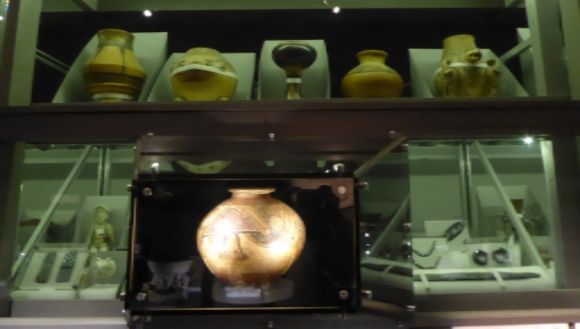
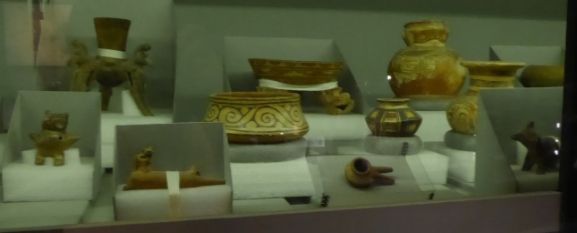
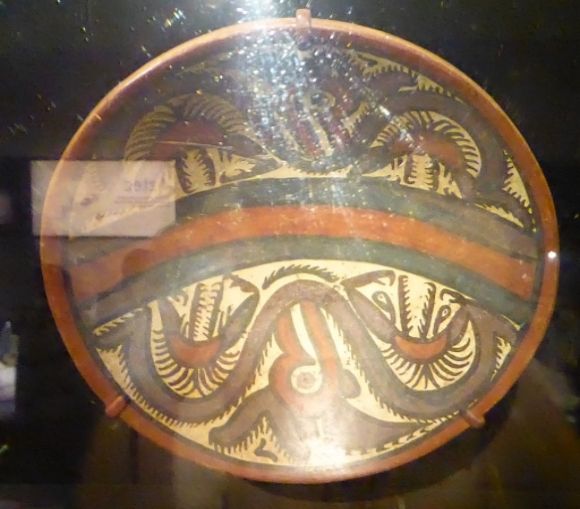 Shown above is a Cocle plate with mirrored halves shown an abstract crab and deer motif. The Cocle culture flourished in Panama from about 800 CE until 1100.
Shown above is a Cocle plate with mirrored halves shown an abstract crab and deer motif. The Cocle culture flourished in Panama from about 800 CE until 1100. 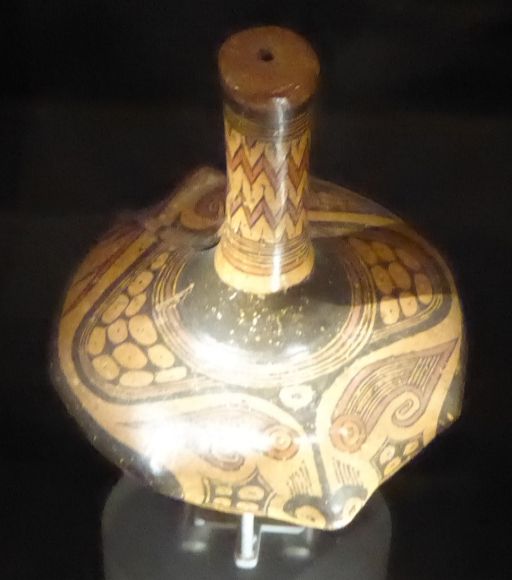 Shown above is a Cocle vessel.
Shown above is a Cocle vessel.
According to the Museum display:
“A stylized stingray encircles the neck of this bottle. Sea creatures were common in pre-Hispanic Central American mythology and are associated with creation stories. Archaeological evidence suggests that stingray spines were widely used in ritual bloodletting in ancient Latin America.”
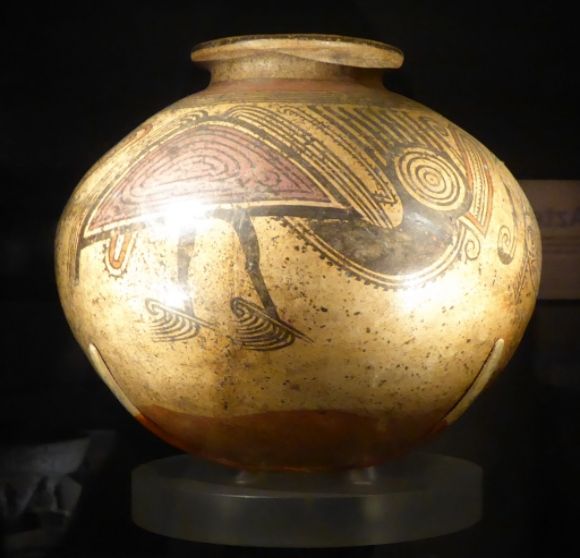 Shown above is a Cocle vessel with stylized birds.
Shown above is a Cocle vessel with stylized birds.  Shown above is a ceremonial metate from Costa Rica.
Shown above is a ceremonial metate from Costa Rica.
According to the Museum display:
“Because the metate was important for grinding maize into flour, scholars believe that it became a symbol for transformation from death to rebirth. This metate was carved in the shape of a jaguar—an important spiritual symbol in ancient Latin America.”
Ancient America
In an era in which the current regime seems to feel that American history began with the European conquest, it is important to remember that the Americas had already been occupied for thousands of years.

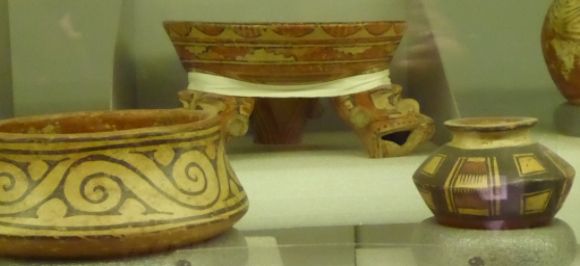

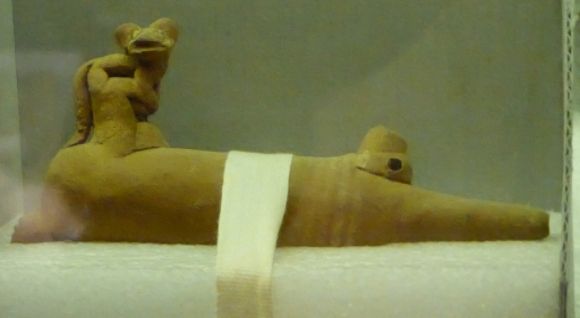
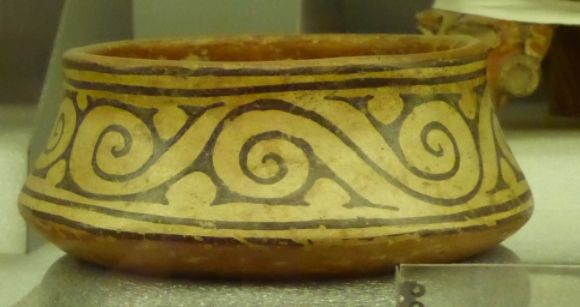


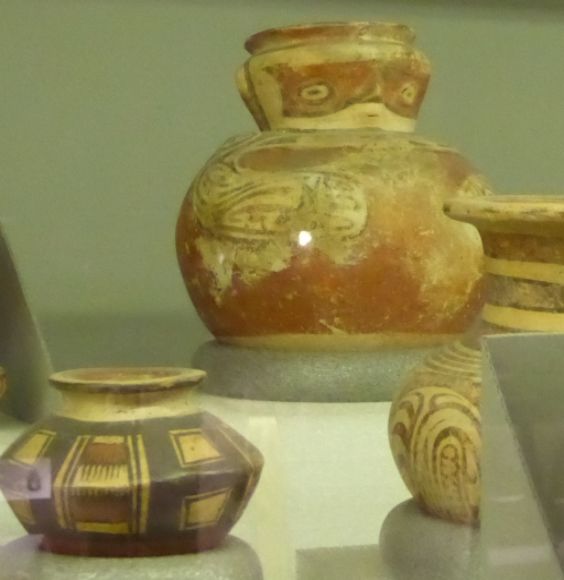

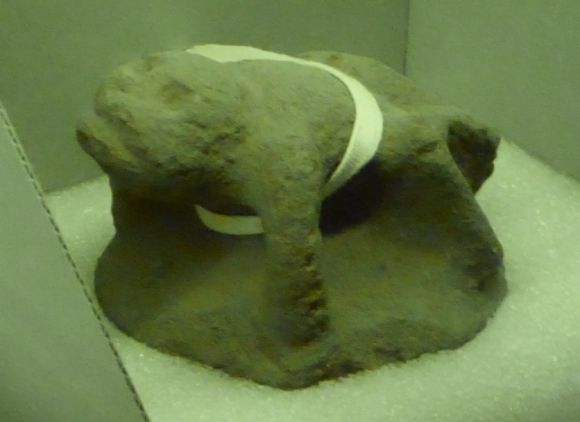
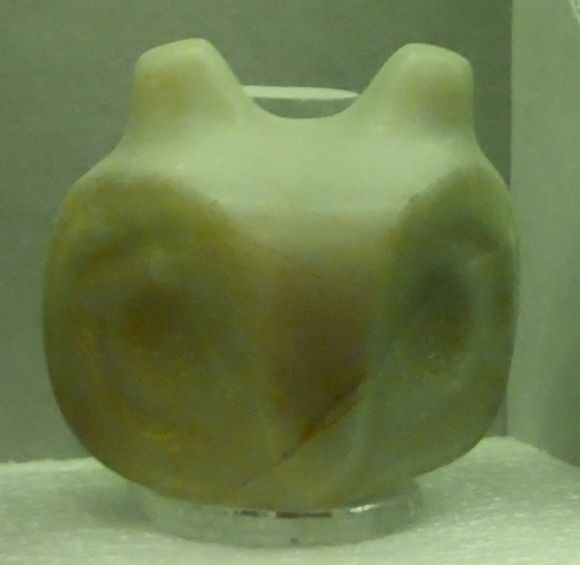
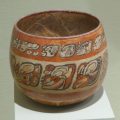
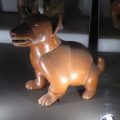
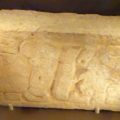
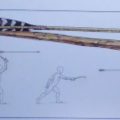
Leave a Reply